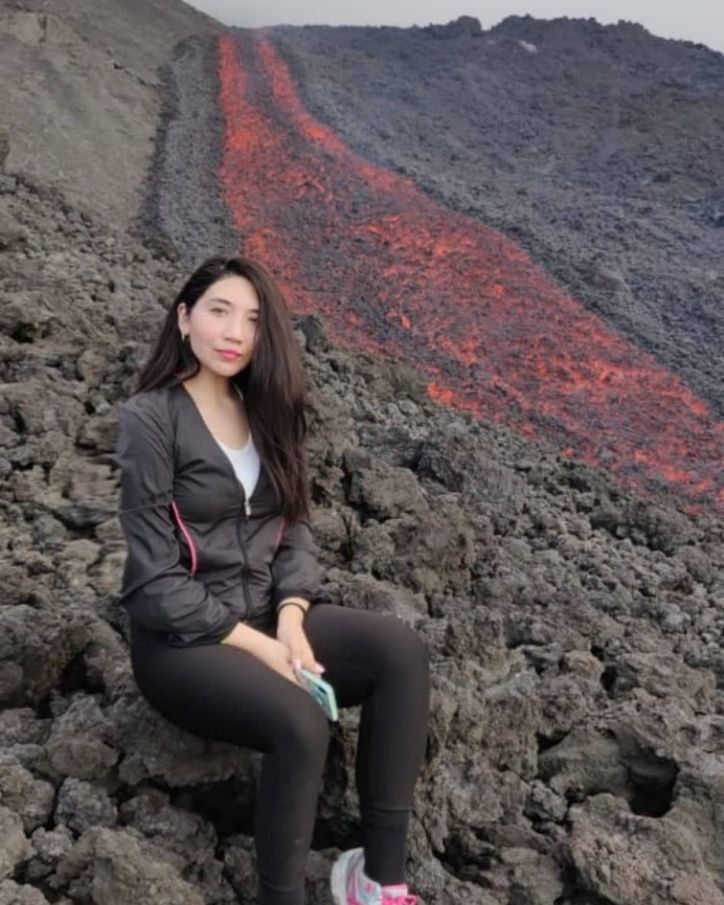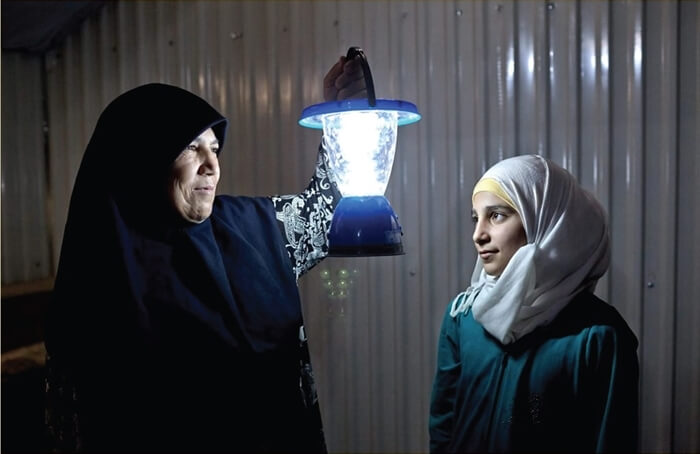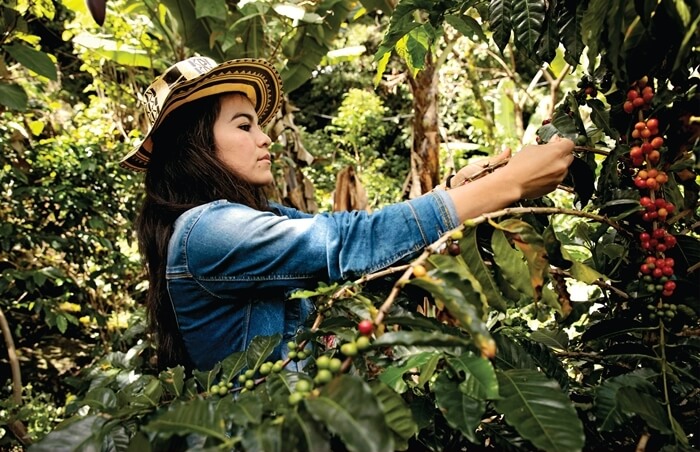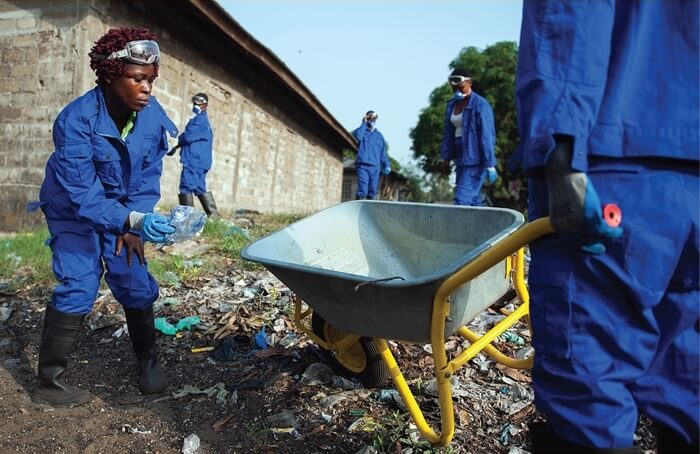Introduction
The United Nations Sustainable Development Goal (SDG) #15 aims to protect, restore and promote sustainable use of terrestrial ecosystems, sustainably manage forests, combat desertification, halt and reverse land degradation, and halt biodiversity loss. This blog post will provide a general overview of this SDG, as well as establish its relevance to island communities. There will also be an exploration of the importance of conservation efforts to island communities, efforts which have unfortunately been neglected in the wake of the COVID pandemic. While the pandemic had the beneficial effect of placing renewed focus on agriculture and its role in boosting food security, efforts must be made to mitigate deforestation, and the emergence of monocultures. This SDG also seeks to affirm “the intrinsic value of biological diversity, as well as the ecological, genetic, social, economic, scientific, educational, cultural, recreational and aesthetic values of biological diversity and its critical role in maintaining ecosystems that provide essential services, which are critical foundations for sustainable development and human well-being”.
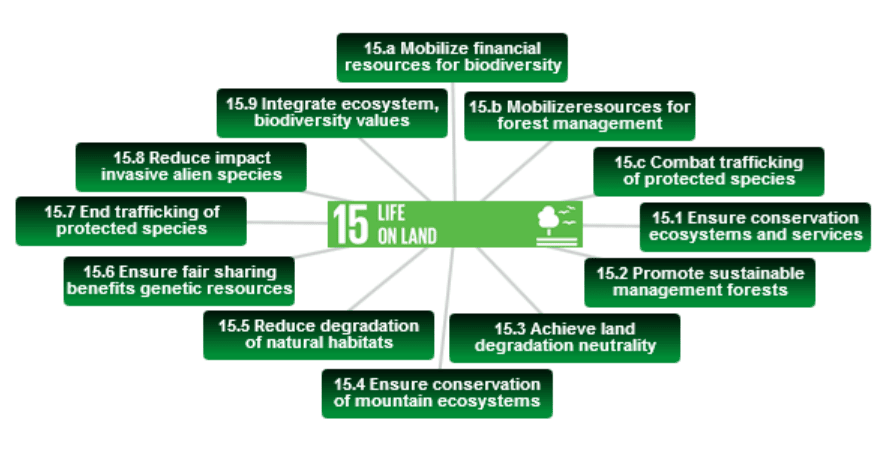
Image credit: UNCCD Knowledge Hub
An Overview of SDG #15: Life on Land
Life of Land is an SDG with a simple title that belies the complexity of its targets, outlined in the diagram above. The common thread running across all of these targets is a focus on ecosystems, biodiversity, and natural habitats, all of which can be categorised as aspects of conservation.
Conservation is a global concern, because a healthy and diverse ecosystem is inherently linked to the health of the human species. There are five main reasons for this:
- As a species, we depend on the many services that ecosystems provide, such as fresh water, fertile soil, pollination, medicine and food. When an ecosystem is weakened by the loss of biodiversity, it cannot deliver those services effectively. This is especially true in the face of increasingly steep levels of population growth
- Research has indicated that that there is a close link between disease outbreaks and the degradation of nature. In fact, according the source in the link above, seventy percent of currently emerging viral diseases have been contracted from animals to humans. For example, it has been postulated that the COVID-19 pandemic can be sourced from a wild animal and fish market in Wuhan, China. This pandemic has shown that such outbreaks are not only catastrophic to human health, but also to the global economy. It can therefore be ascertained that protecting biodiversity in Earth’s ecosystems, nations all over the world could save lives and money, while helping to prevent future pandemics.
- Maintaining biodiversity is a crucial aspect of achieving emissions reductions, and thus fighting climate change. In a landmark 2017 study led by Bronson Griscom, it was demonstrated that nature can deliver at least 30 percent of the emissions reductions needed by 2030 to prevent climate catastrophe. Therefore, it is imperative to protect biodiversity by preserving forest and mangrove ecosystems which capture carbon dioxide, and store carbon in their tissues.
- Biodiversity is a foundational pillar of the global economy; at least 40 percent of the world’s economy and 80 percent of the needs of the poor come from biological resources. People all over the world, depend on the natural world for their livelihoods and well-being in the form of medicine, food and fuel. This is especially the case for indigenous people, and those from developing countries in the Global South. Economic prosperity can also boosted by nature-based or eco-tourism.
- Finally, biodiversity forms an integral part of the culture and identity of the world’s population, whether it is openly acknowledged or not. The natural world plays a crucial role in the sense of self of indigenous populations, especially those in island territories, where the ocean’s ecosystem and marine wildlife are a vital and harmonious presence.
 The conservation of biological diversity was the subject of Chapter 15 of Agenda 21 which was adopted at the United Nations Conference on Environment and Development, in 1992, in Rio de Janeiro. On the same occasion, the United Nations Convention on Biological Diversity (CBD), was opened for signature, and currently has 196 signatories.In June of this year, the Parties to the UN Convention on Biological Diversity advanced a global plan to bend the curve on biodiversity loss,and this plan is expected to be adopted in Montreal, Canada in December 2022.
The conservation of biological diversity was the subject of Chapter 15 of Agenda 21 which was adopted at the United Nations Conference on Environment and Development, in 1992, in Rio de Janeiro. On the same occasion, the United Nations Convention on Biological Diversity (CBD), was opened for signature, and currently has 196 signatories.In June of this year, the Parties to the UN Convention on Biological Diversity advanced a global plan to bend the curve on biodiversity loss,and this plan is expected to be adopted in Montreal, Canada in December 2022.
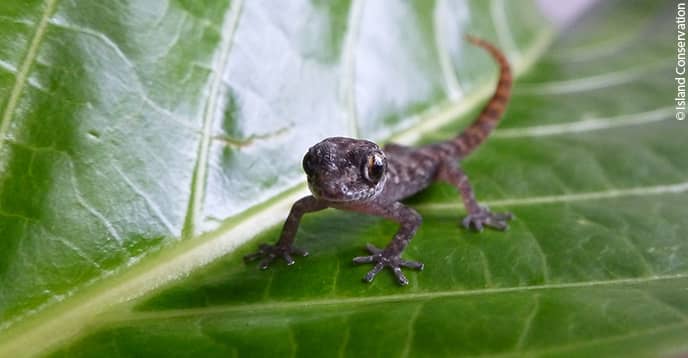
Image credit: UNESCO
Life on Land in Island Communities: Why Does It Matter?
The biodiversity and accompanying ecosystems in islands act as a sound basis to formulate nature-based solutions to combat climate change, and build adaptive strategies. For example, the prioritisation of preserving mangrove forest habitats provides numerous benefits in the fight against climate change. Mangroves thrive in saltwater and coastal environments, and possess complex and strong root systems that protect the coastal communities found in islands from extreme weather events such as hurricanes and cyclones. Additionally, mangroves possess the amazing ability to capture and store significantly greater amounts of carbon than other tropical forests; in fact, up to four times as much. Also, the soil that hosts mangrove roots is particularly muddy and carbon-rich. Over time, the mangroves help to not only add to this store of soil by capturing sediment, but also hold it and the carbon in place. Therefore, mangrove forests are a crucial weapon in the arsenal of the fight against climate change.
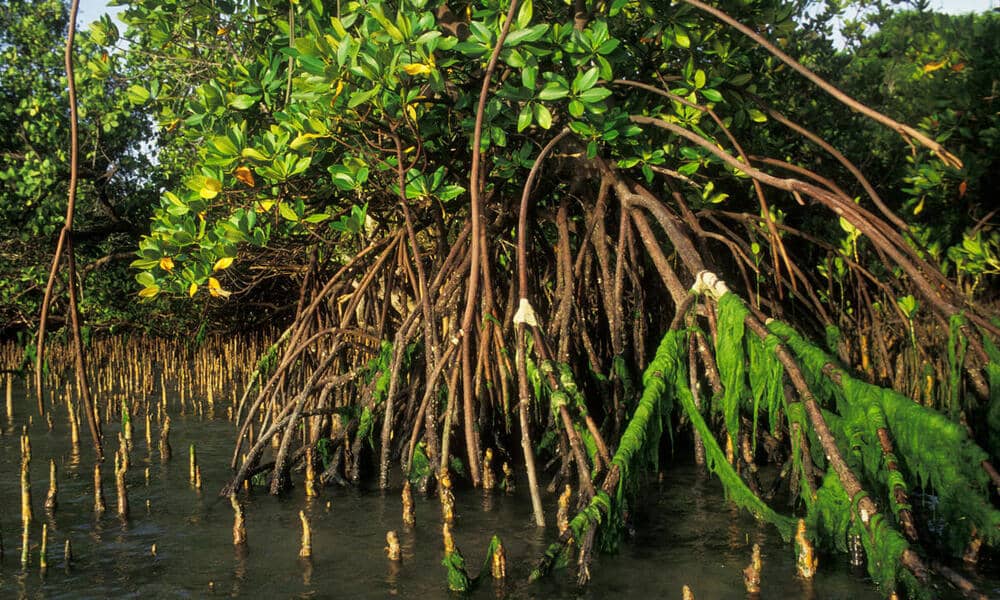
Image credit: World Wildlife Fund
The natural world of island communities play a major role in recreation and mental well-being. In many island cultures, natural landscapes are intrinsically linked to spiritual values, religious beliefs and traditional teaching. An example of this is seen in the Faroe Islands, where nature forms the foundation of numerous cultural activities.Fishing is a huge part of everyday life, and cuisine is connected to the surrounding nature. Wild birds, pilot whales, various species of fish still form an integral part of the Faroese food, and the commitment to sustainability is illustrated by the practice of utilising all of natures’ precious treasures. An increasing number of local industries manufacture products from fish protein processing, and fashionable garments are made from Faroese wool and fish scale.
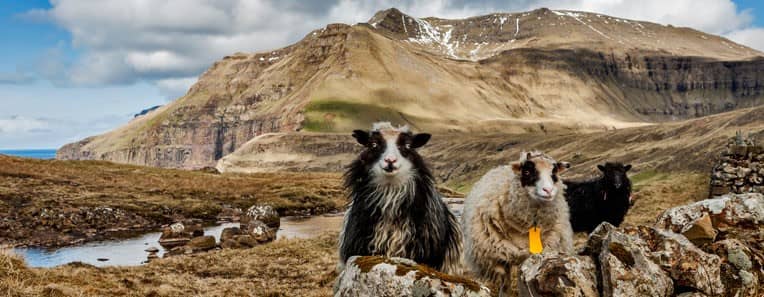
Image credit: faroeislands.co
The Importance of Conservation in Building Resilience in Island Communities
Islands all over the world are home to a multiplicity of discrete ecosystems, ranging from wetlands to volcanic landscapes and beyond. These ecosystems provide many services in the form of vital raw materials which include food, fresh water, wood, fibre, medicines, and fuel. Also, although islands account for just five per cent of the world’s land-mass, they are home to approximately seventeen per cent of some species. In addition to this, some coastlines in tropical ecosystems are home to coral reefs that are among the most biologically diverse ecosystems in the world, and in turn providing livelihoods for millions of people.
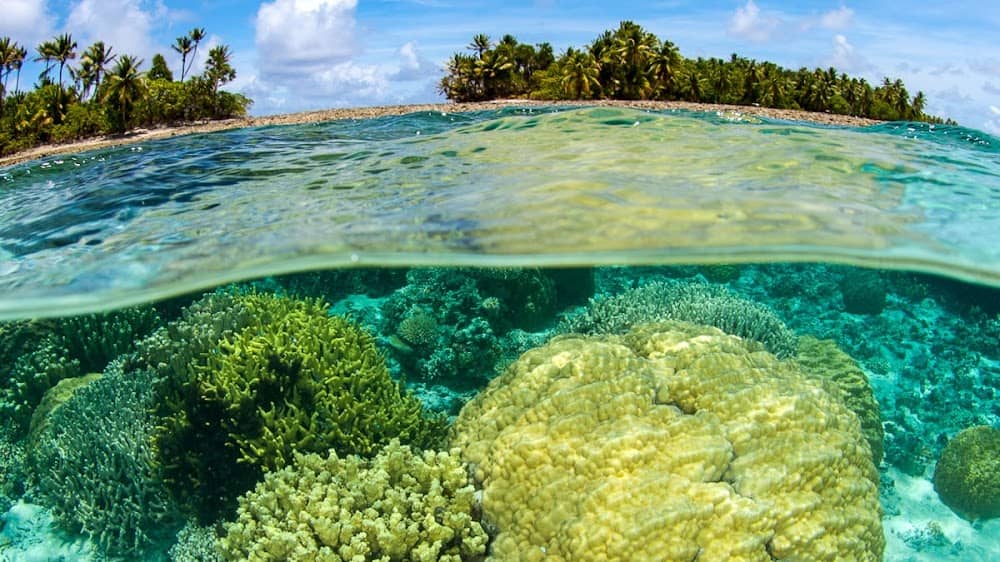
Image credit: Woods Hole Oceanographic Institution
Prioritising conservation efforts has multiple benefits, and the most important foundations for these efforts are adequate funding vehicles. Examples of such vehicles can be seen through the work of the Caribbean Biodiversity Fund, which was established in 2012. The aim of this fund is to create long-term and consistent funding to facilitate sustainable development and conservation in the Caribbean. Two of the most notable programs are the Conservation Finance Program, anchored by a US$75 million endowment fund, and the Climate Change Program, anchored by a US$27 million sinking fund focused on Ecosystem-based Adaptation (EbA).
Another example is In the Scottish islands of Orkney, where the Orkney Native Wildlife Project strives to preserve the native wildlife of Orkney. This is achieved through the multi-sectoral collaboration between the Royal Society for the Protection of Birds of Scotland, NatureScot and Orkney Islands Council.
To discover more fantastic examples of conservation on islands, and ways that SDG #15 is being implemented, we invite you to register for this year’s Virtual Island Summit! There will be discussions featuring a wide range of stakeholders, who will focus on the most innovative and effective ways to protect island biodiversity.

I joined Island Innovation in July of 2021, after being an Island Innovation Ambassador since January of the same year. As Content Manager, I am responsible for, among other things, organising sponsorships, content strategy design and implementation, reviewing social media channels, and creating content to promote specific Island Innovation events. One of the best things about working with Island Innovation is the opportunity to work with like-minded and supportive colleagues who facilitate each others’ efforts to fully implement the vision of Island Innovation. I truly believe that this vision will make this world a better place by enhancing the ability of island communities to operate collaboratively, and thereby become more sustainable and resilient. I am quite enthusiastic and driven, so it is wonderful to work with colleagues who match and encourage my enthusiasm and relentless positivity!







